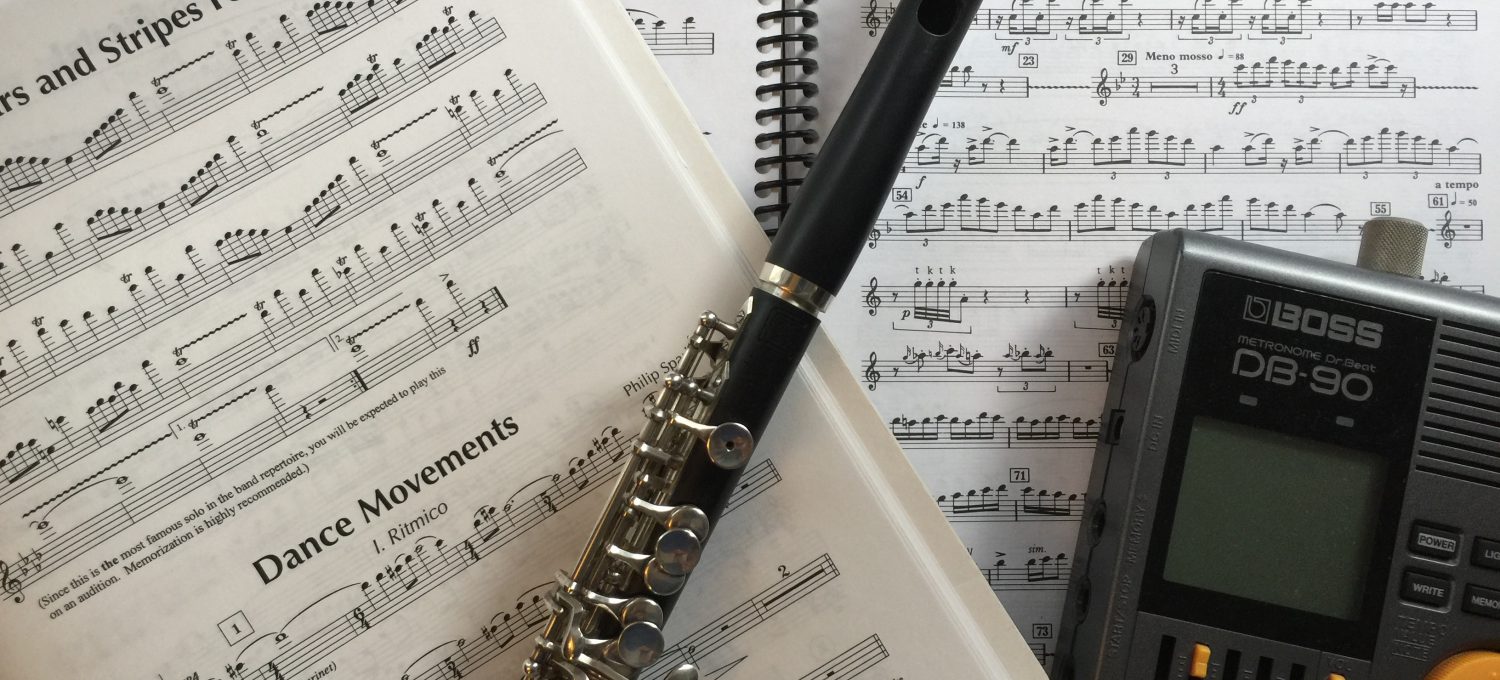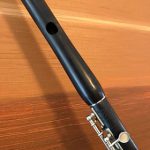It becomes necessary to discover a method to get myself back in shape for concerts or performances that pop up with only a few weeks of notice. This is when the years of practice pay off and the technique comes back to the fingers after a day or two of woodshedding. Unfortunately, the embouchure is not as quick to recover on the piccolo and control and endurance become a huge challenge.
The first thing I do is schedule time to practice. I need to make time in the midst of my list of roles and duties before I can even hope to have some quality to my performance. The very next thing I do is go back to the basics. What I am about to share is in no way, shape, or form, a shortcut to success. Only because of the years of hard work that I have put into the practice room does this method work for me. There is no substitute for shedding blood, sweat, and tears in the tiny cubicle from which acoustical nightmares are made. Hard work and dedication are required!
I approach my practice sessions as one would approach working out. Short warmup, some stretching, then some weight or resistance training, and finally some cardio. When I first get back to practicing after a prolonged period of time away, I go immediately to long tones. I specifically focus in the first octave using one octave scales, basic triads, and a lot of patience. I also use a tuner with the ability to create a drone (quite a few phone apps do this now). I set the drone to play the tonic of the scale or arpeggio and I begin matching the pitch for a full breath, three times. Following the playing of the tonic, I then progress up the scale slowly, listening to the relationship of my notes to that of the drone. I pause on each note of the chord (triad or seventh) to establish a solid relationship with the drone. The reason for this is that I want to refine my ear and get my brain, fingers, and ears working together again. I have found, as have many others, that establishing a solid pitch relationship in the beginning of a practice session makes for a more in-tune session overall.
After a decent warmup, I move on to the “stretching” portion of my session. I love exercise number eleven in the Taffanel and Gaubert 17 Daily Studies. I find the exercise to be relaxing and enjoyable, rather like taking a jog to your favorite playlist. It is important to proceed slow and steady, feel your way through the intervals. I advise against using a metronome for this exercise when using it for embouchure work. Focusing on keeping up with the metronome will overpower paying close attention to the lip movement and air control connection. This exercise is like meditation for me and it allows me to focus inward and really feel what I am physically doing. For added fun (not really), turn the drone back on and continue through the exercise slowly. Remember, this is to strengthen the embouchure and build the tone back up. It is not about speed or technique at the moment.
Finally, I embark on the “cardio” or “weight” training portion. Keep it simple. I vary this depending on my mood that day and what else in my playing needs work. Some days I will work with exercise four in Taffanel and Gaubert, while on other days, I prefer to work out of Kujala’s Vade Mecum, focusing on Practice Guide No. 6. Again, the simple and organized technique regime allows me to better focus on the physicality of my playing and really understand what my embouchure is doing. In the end, players need to determine what works for them; this is just my way of getting back into the swing of things after some time off. I enjoy these exercises and they do not feel like work to me. I think this point is very important, as being patient with something you don’t enjoy or that feels like actual work makes practice tedious.
Patience is virtue, especially when it comes to working on fundamentals.
My best piece of advice when digging into this particular area of fundamentals is that a player should use his or her ears. If you don’t like what you hear or something isn’t working, stop and take a moment to figure out what is going on. No matter what, don’t just plow through these exercises on autopilot, because that makes them useless. It is far more beneficial to approach these exercises from a relaxed perspective.
Take your time, enjoy the process, and listen.



